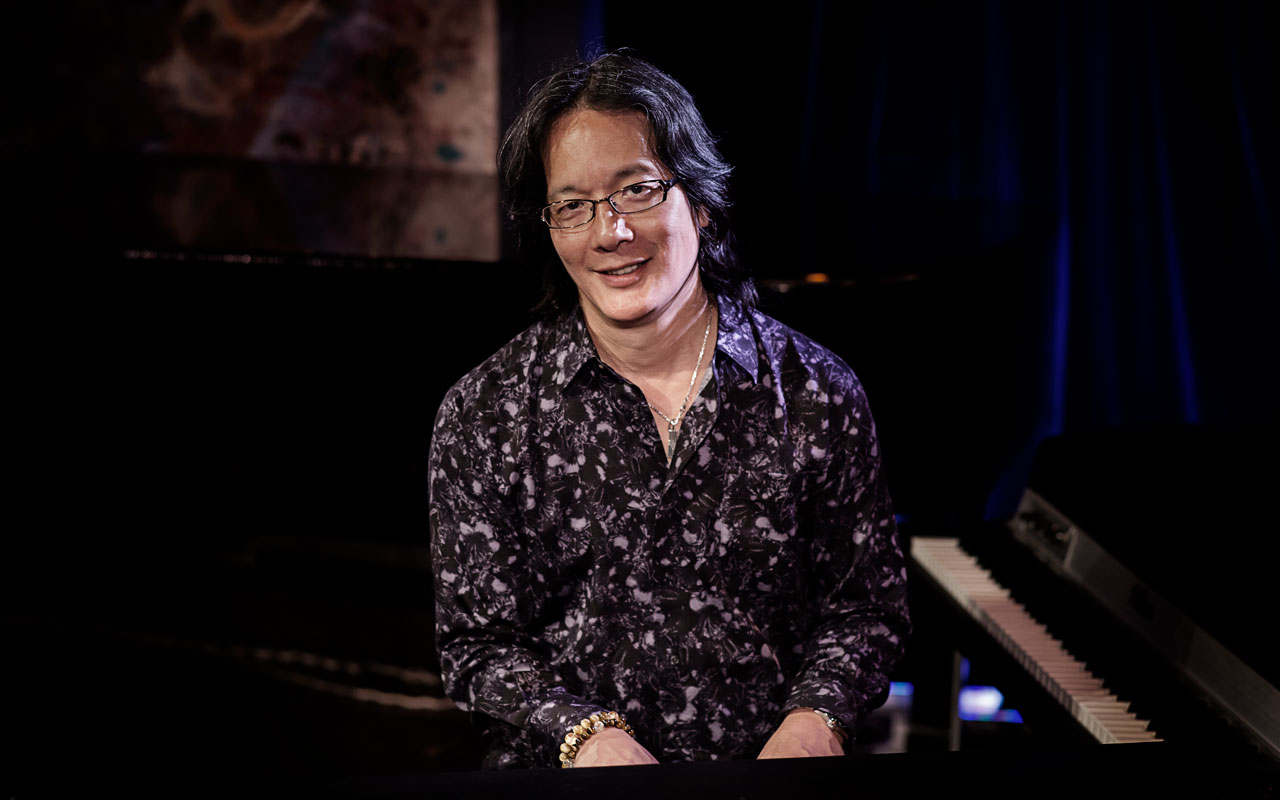
Philip Woo photo courtesy of the artist
Earshot Jazz is proud to share brief excerpts from the forthcoming book After the Bottle Clubs Closed: Seattle Jazz in the Modern Era w.t. (History Press of Charleston, S.C.) by Seattle’s preeminent jazz writer, Paul de Barros, and Seattle-based music journalist Alexa Peters. Picking up where Jackson Street After Hours: The Roots of Jazz in Seattle (Sasquatch Books, 1993) left off, the new book will feature fascinating interviews with the familiar artists and under-sung heroes who shape this vibrant jazz scene.
If you’re a diehard mainstream fan, keyboard player Philip Woo is probably the most successful Seattle jazz musician you’ve never heard of. Woo came up with Kenny G in the prize-winning Franklin High School Jazz Lab Band in the early ‘70s and was playing in New York at 19 with vibist and pianist Roy Ayers, and has pursued an illustrious career as a first-call sideman in jazz-funk, soul, fusion, pop, and bands. We’re talking million-selling artists here: Grover Washington, Jr., Angela Bofill, Maze, Whitney Houston, Phyllis Hyman, George Howard, Patti LaBelle and Roberta Flack.
After two decades as a road warrior, in 1998, Woo moved to Japan, where he has worked with Japanese superstars such as stadium-filling boy band Exile and now writes hit songs with partner Ken Kobori. For fun, he also plays a little straight-ahead jazz piano.
This past October, friends and family feted Woo on the Eastside, where he graciously sat down for an interview.
At Meany (middle school), there were like 15 pianos in one room. Before the teacher would arrive, the kids would show each other the latest tunes, like “My Cherie Amour” or “Groovin’,” songs like that. The art teacher used to have one 45 that she would repeat the whole day: ‘I’m Black and I’m Proud!’ [James Brown]. In the lunchroom, it would be Sly & The Family Stone. This band, Acapulco Gold, came out of Meany and Garfield. Some of them were still in junior high school. They were like our early Central District heroes.
At Franklin, I got recruited into the Jazz Lab big band that went to competitions, but (composer and arranger) James Gardiner also put together a six or seven-piece combo. We did Red Clay and Blue Mitchell, funk, funk jazz, Clarence Wheeler and The Enforcers. We used to steal the PA from the band room, throw it on a gardening truck and do gigs on the weekends. I also had a group called Energy with Kenny G, (saxophonist) Dean Mochizuki, (bassist) Danny Benson, (drummer) Lee Turner, and (guitarist) David Yamasaki. We did this one gig and we made like $135 each. So, Chuck Chinn was the band director and somebody snitched on us, right? And he said, “You guys give the money back that you earned.” I was like, “No, I’m not giving the money back.” And I quit the band.
While I was still in high school, I took my girlfriend down to see Roy Ayers at the Gallery Tavern (now El Corazón). There was only maybe eight or ten people in the club that night. He said, “Does anybody out there want to come up here and play?” I was 17 at the time. I said, “I do.” So I went up and played with them. It was just like a one-key funk groove, you know? So fast forward two years. I’m at Seattle Central, playing with Cold, Bold & Together (also with Kenny G) and I go see Roy at the Pioneer Banque. He says, “I know you! Do you want to come and play tonight?” And I said, “Sure.” After we played for two weeks, he said, “How’d you like to move to New York?” The guys in Cold, Bold & Together all came over to my house. They said, “Don’t go to New York. Stay with us!” And I was like, “Sorry, fellas, I gotta take this one.”